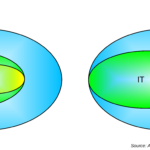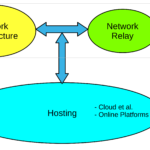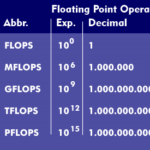Context
Access to both new technology platforms, such as social networks and mobile technologies, and faster networks has enabled millions if not billions to share information on a global scale. The fact that most of these new platforms are private and operate in quasi oligopolistic fashion, has facilitated the concentration of data in a few platforms that now have unprecedented command over vast amounts of data and information. 7 billion mobiles users and close to 3 billion people accessing the Internet demonstrate the real scale of this evolution.
Emerging global trends such as open government, open data, big data and crowdsourcing are piggybacking on this transformational change to bring to the table innovative development approaches and solutions. By the same token, the post-2015 High Level Panel has called for a “data revolution” which will not only help measure in more accurate fashion progress towards the achievement of nationally and internationally agreed development goals but will also provide policy makers with actual evidence to fashion more adequate and effective policies and programmes.
This was certainly not the situation when the MDGs were endorsed by all UN country members in 2000. Back then, data and information were still very scarce and expensive commodities. However, this does not mean that nothing has happened in this space since then -and before the data “revolution”.
MAF, innovation and data
Enter the MDG acceleration framework (MAF), launched in 2010.
The development of the MAF aimed at revitalizing the global MDG agenda which by the end of the first decade of the new Millennium was falling behind expectations. MAF identified four innovative steps to accelerate MDG achievement by 2015 – three of which can be easily linked to new ICTs and information sharing and dissemination. MAF also demanded, almost by design, improved methodologies and new tools to measure more effectively and in more granular way progress towards the achievement of the various priority MGD targets that countries had identified.
Over 50 developing countries have now used MAF’s approach to accelerate MDG achievement at the national and sub-national levels. In doing so, these group of countries have also faced the need to compile, aggregate, analyze and distil data to monitor progress and share comprehensive MDG reports with the wider public. Over 500 (HOW MANY?) national MAF reports are now available. These reports, which are nationally owned, contain a plethora of data and indicators. They could thus be brought together and made available in systematic fashion to policy makers, development practitioners and researchers among others – bearing in mind that MAF data and indicators are not comparable across countries in most cases.
Nevertheless, it seems that, for the most part, MAF has remain oblivious of the seemingly unrelated “data revolution” and its cousins, open data, big data and crowdsourcing. Rather that being a insurmountable gap, this is instead a real opportunity to make MAF even more relevant not only for the achievement of the MDGs but also for the upcoming post-2015 development agenda – and the ensuing data “revolution”.
Main objectives and outputs
The core objective is to bring together under one single and innovative umbrella all data and indicators that MAF countries have produced in the last few years. By capitalizing on new ICTs and linking MAF to open and big data, and crowdsourcing, MAF data can be placed in one virtual platform that will allow for comprehensive information sharing and dissemination among all stakeholders, while fostering policy and programme networks within and between countries.
The potential richness of MAF related data and indicators stems from the fact that each country involved in the process can and has used different data and indicators to measure progress of specific MDG targets -a one size does not fit all approach. This allows for better capturing local contexts and issues that might otherwise be ignored if more macro data and/or indicators are universally deployed. While cross-country and regional comparisons might no be available, the potential for South South cooperation, learning by doing and cross-pollination across national development practitioners is enormous.
Key activities
While all MAF reports are digitally available in UNDP web sites and others, there has been no systematic effort in compiling the data and indicators these reports contain. In this light, the following tasks will need to be undertaken, among others:
- Creating an inventory of all MAF reports by country and region for all years available
- Identifying and extracting of all data, indicators and sources in the reports
- Digitazing all relevant information
- Aggregating all data by MDGs targets
- Creating a digital relational database of the data et. al.
- Developing a web site and interface to dynamically query the database
- Making use of multimedia, maps and infographics to display information in more user friendly fashion
- Launching a communications and social media campaign to spread the word on the initiative
- Ensuring MAF countries are part of the process and use the information
- Enticing MAF countries to use digital data and information to produce new reports
- Linking national MAF partners to link with national and regional efforts on open data and big data and crowdsourcing
- Supporting NSOs in their use of new technologies to capture and disseminate relevant public data and information
UNDP relevance
Evidence based policy development and advice are key cornerstones of UNDP’s new strategic plan. Having access to relevant data and information is thus key to achieve this goal. However, UNDP does not yet have sufficient and strength to make this happen on a large scale. An initiative such as this will be an important contribution in this area while at the same time helping UNDP built its own data sets and systems. This initiative cn also be seen as part of output 7.2 of the strategic plan, Global and national data collection, measurement and analytical systems in place to monitor progress on the post 2015 agenda and sustainable development goals.
Cheers, Raúl





